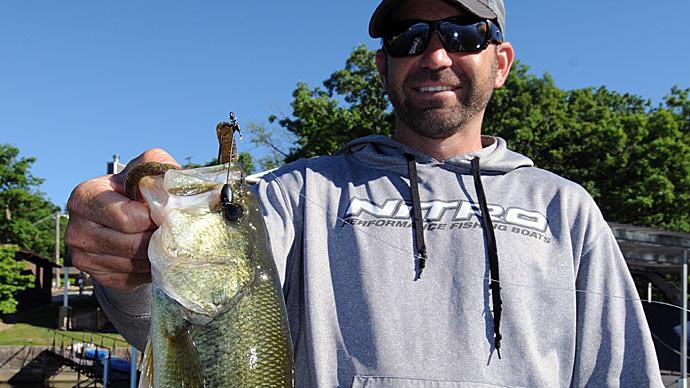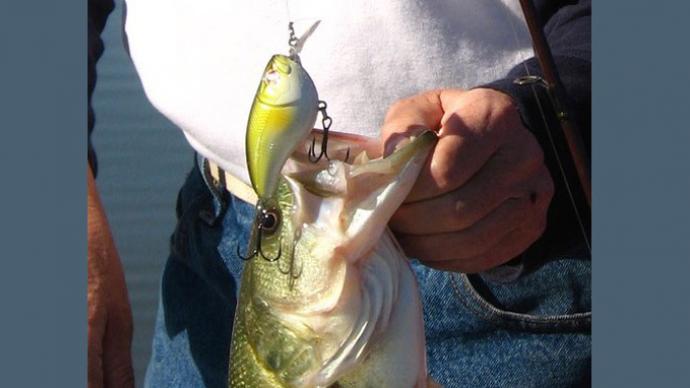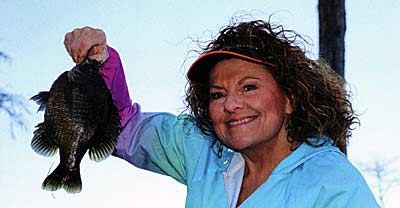
Many times, we all want to know what to expect from stocking fish into a new, or recently renovated pond—one with no fish. That is often preceded by the question, "How long should I wait to stock?" Then followed by, "What growth should I expect?" The answer to all the new pond questions is dependent on goals, water quality, and productivity. A good way to view the workings of a pond are like that of an engine. A pond is an engine dependent on sunlight for power and its soil/water for nutrients. In more recent years, the concept of bioenergetics has been used in studies to quantify all matters of pond life. It is the study of the flow and transformation of energy within a particular system.
Bioenergetics is the field of biochemistry that concerns energy flow and transformation through living systems. Growth, development, and metabolism are some of the central concepts in the study of biological organisms like fish. Understanding the role of energy as it works through biological processes is fundamental to evaluating growth in fish. The ability to harness energy from a variety of metabolic pathways is a property of all living organisms. All pond life is dependent on energy transformations; living organisms survive because of exchange of energy within and without. Living organisms obtain energy from organic and inorganic materials. For example, bacteria can oxidize minerals. In photosynthesis, plankton can produce ATP using light energy. Animals must consume organic compounds. These are mostly carbohydrates, fats, and proteins. The amount of energy actually obtained by any organism is lower than the amount present in the food; there are losses in digestion, metabolism, and thermogenesis. In short, energy put into a system or a fish, for example, equals outputs (energy used) plus growth. It's both the output and growth that answer the question of what I should expect from my fish in a new pond, or any pond for that matter.
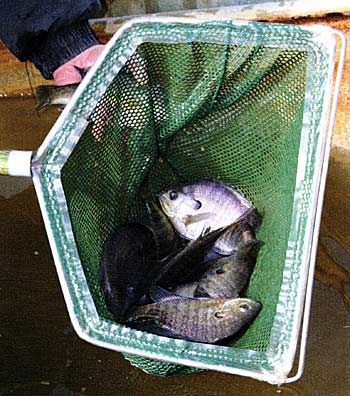
What to expect from your pond fish depends on its natural productivity and any enhancements you may make, like fertilization or supplemental feeding. Also, because fish are cold blooded, temperature is a critical factor in all biological aspects. Growth also varies by region as southern warm waters usually result in faster growth and shorter life span while northern waters result in slower growth but longer life spans. If you read about a southern pond owner's bluegills growing to 8 inches in Year One, don't worry if your northern bluegills are 4 inches after the same period. The idea of what to expect is this—it all depends on the location and situation.
Young fish grow very rapidly and then growth slows down. Because they are cold blooded, they grow quickly in warm summer waters and as the water cools in fall, metabolism slows and feeding and growth slow substantially. One way to increase growth early on is through supplemental feeding of high protein fish food pellets. Lack of adequate food resources is the most common reason for slow growth in many fisheries. The rate of growth of sunfish can be increased by short-circuiting the food cycle, thereby producing larger size sunfish in a shorter period of time than would occur under natural conditions, as seen in Carnes 1966. Another study provided that the energy cost for bluegill to feed on pellets is small relative to the high caloric intake, which can be 4-5 times greater than those fed just natural foods, see Schalles and Wissing 1976. Obviously, this approach increases food intake with very little energy used by the fish—more energy in and less-used equals more growth.
Viewed as an entire system, pond feeding increases both individual fish growth and also total pounds of fish. Results indicate that total fish production, and production ofbluegill. were each increased approximately 75 to 80% by supplemental feeding in 19 months after stocking, see Schmittou 1967.
Food Habits of White Amur. Largemouth Bass. Bluegill and Redear Sunfish Receiving Supplemental Feed by Ronald H. Kilgen in 27th Southeast Association of Game and Fish Commissioners, noted several items about feeding. Largemouth bass preferred fish and other animals (64%), but also ate some supplemental feed (32%). Bluegill stomachs contained more supplemental feed (44%) than any other item, followed by insects and animal parts (28%), and plant parts (17%). Redears seemed to prefer insect larvae (42%), but also ate plant material (38%). White amur apparently did not compete with the sunfishes for either natural or supplementary food items.
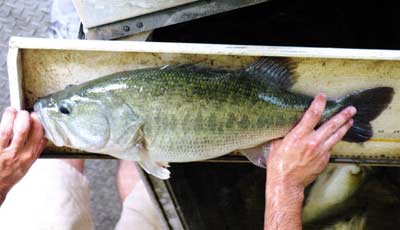
In the first year (and subsequent years, also) warming spring/summer water temperatures ramp up metabolism and the need for food (feeding), and with it, increased growth. An example is the information contained in Growth Rates and Temperature Selection of Bluegill, Lepomis macrochirus by Thomas L. Berttinger and John J. Magnuson in Transactions of the American Fisheries Society 108:378-382,1979, which provides growth and temperature information for Bluegill. Interestingly, maximum feeding and growth occur at different water temperatures. Bluegill feeding rates were best at 77 to 82 F and food conversion efficiencies at 83 F. High growth occurred over a broad range from 68 to 93 F (a few degrees below the upper lethal of 96 to 99 F). However, there was a difference between water temperatures at which highest growth occurred (86 to 88F) and maximum feeding (77 to 82 F).
So, how soon can you stock fish? If there has been water in the pond for a few weeks (even if not full pool) you can stock fathead minnows, as they are very tolerant of poor water quality and low oxygen saturation. It helps if you feed them a little with pelleted feed and have structure for them to use and spawn. Fathead minnows stick their eggs in nests, on the underneath side of firm objects. Sunfish can be stocked at the same time, or soon thereafter. When you stock predator fish like bass and others depends widely on your goals and location. It's important to establish your food chain, first.
New waters are exceedingly fun to watch grow. Sit back, relax and enjoy while you watch nature unfold and the fish grow. Don't be impatient even if growth is not as fast as you would like. Make sure the water is good and provide enough food—the rest will happen.
Reprinted with permission from Pond Boss Magazine

